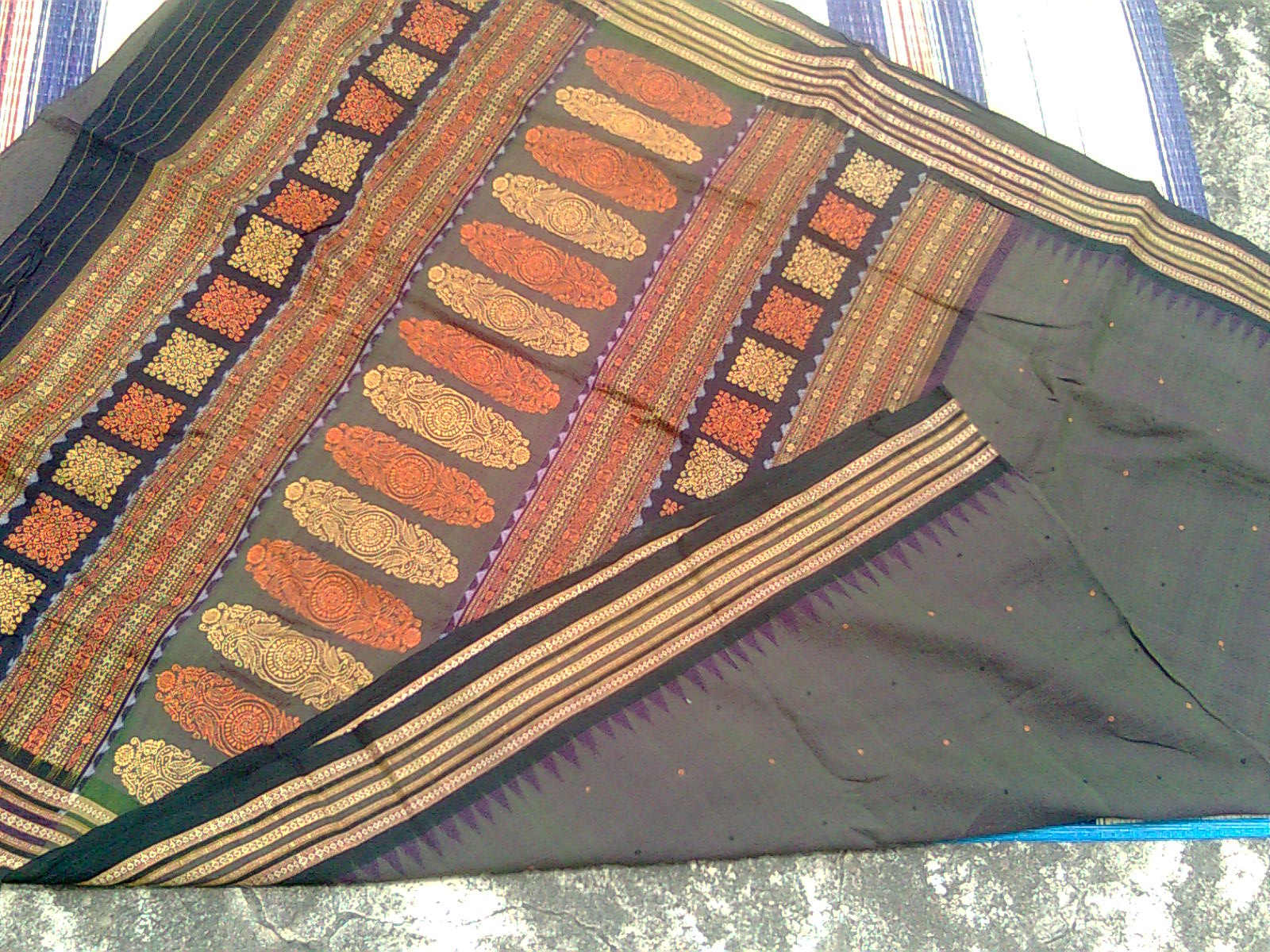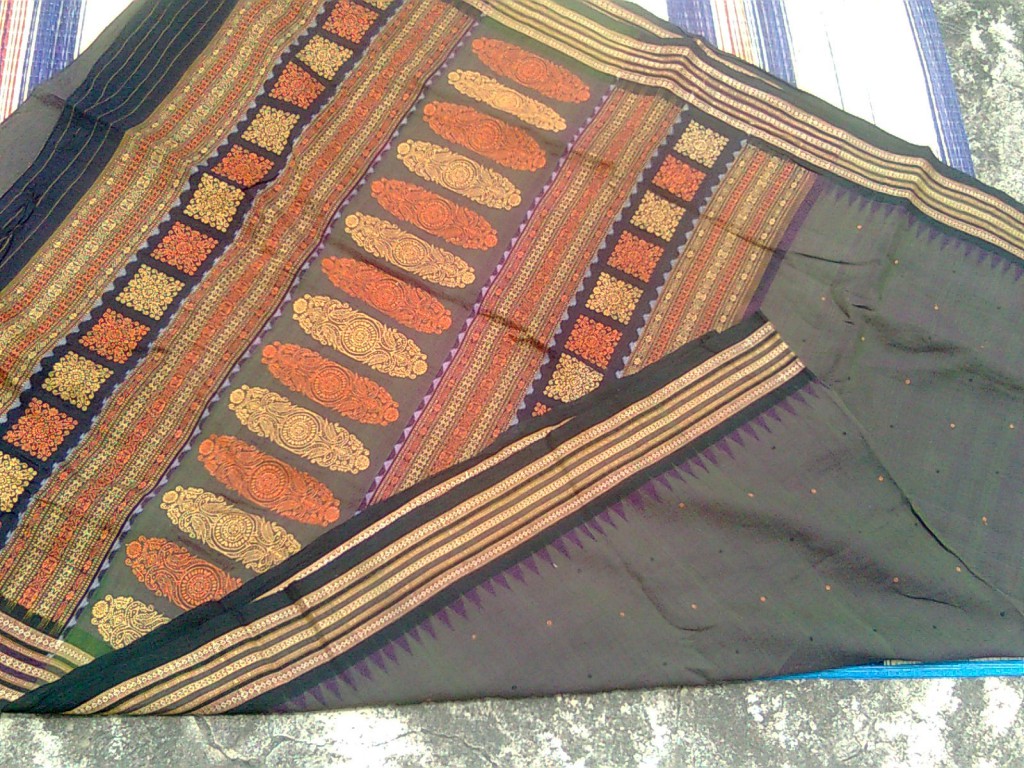
Bomkai Silk
Woven on a pit loom, Bomkai, which is also known as Sonepuri, is an extraordinary fabric that results from the confluence of two extremely popular components of the Orissa textile industry. In its simplest, Bomkai can be explained as an extra weft technique on a pit loom.It is an outcome of Ikat and embroidery interwoven into each other. The borders are often in contrasting colors and the pallus marked by intricate threadwork. The motifs on the Bomkai are inspired from nature and tribal art, giving the saree a fascinating look that makes it perfect for aristocracy. Bomkai sarees are available in cotton and silk fabrics.
Origin and History
The historical significance of Bomkai emerges from the fact that Bomkai is one of the traditional faces of a designer Orissa; and, showcases the adept works of an artisan. Also known as Sonepuri the embroidered cloth is a type of saree that was first crafted in the southern coastal parts of Orissa. Undoubtedly then, the fabric carried an essence of the ensembles that originated on the shores. While most of the coastal areas of Southern Orissa are involved in the creation of Bomkai sarees, it is in Sonepur that the prettiest of the fabric facades are found.
Locally known as ‘Bandha’ Bomkai concept of sarees is a part of the Orissan culture since 600 B.C. An outcome of Ikat and embroidery interweaved into each other, Bomkai is a magnificent innovation that has taken over the textile industry and gives it a global push. Traditionally worn as an auspicious attire by the Brahmins of the South during rituals, Bomkai or Sonepuri today is counted amongst one of the most highly thought of attires in the state of Orissa and an illustrious one in other parts of the country.
Sources of Inspiration
Unlike most of the common forms of designs that are painted on the face of various fabrics, Bomkai dares to be different. The motifs and designs portray mythology and well-kept secrets of the past. Inspired by folklore that spring from the roots of the Orissan culture, Bomkai is the heart of the textile industry of Southern India. However, Bomkai doesn’t ignore the inspirations that nature offers to everyone completely free of cost.
Designs composed in the most outlandish of concepts string together motifs from offerings of the environment including karela (bitter gourd), the atasi flower, the kanthi phul (small flower), macchi (fly), rui macchi (carp-fish), koincha (tortoise), padma (lotus), mayura (peacock), and charai (bird). A significant part of the finishing in Bomkai sarees can be attributed to the borders or pallavs. Some of the sarees feature border motifs that are inspired by tribal art. A few examples include, Mitkta Panjia, Kumbha, Rudraksha and Floral.
Colors on the other hand, are inspired by the effect of contrast. So with yellow you might see a nice bright green, and with an orange saree, an equally absorbing yet mesmerizing black border. Sometimes, the pallav might be double shaded, giving out a reflection of royal lustre. Lattice work, which creates small diamond-like shapes, can also be commonly found on the border of a Bomkai saree.
Faces Behind the Fabric
Beginning with the history, as usual, the earliest of Bomkais were made using a technique known as jaalas. Woven with a low count of Cotton yarn, Bomkai saree is a weaving industry which makes use of both the weft and warp techniques. The major occupation of the people of the Chikiti tehsil, Bomkai gets its name from the Bomkai village of Orissa.
The main steps in the manufacturing of Bomkai include dyeing, dressing the loom, as well as weaving. Materials used include pit loom, dye vats, thread, cotton/silk or dyes. While Orissa still makes use of the Jaala technique for creating certain unique pieces of Bomkai and retaining the original flavor of the craft, the industry has not been able to escape the influence of modern day mechanization. However, the changing face of the industry does not, in any way, interfere in the love that people instil for Bomkai.
Varieties
It’s the creativity and the love of the people for Bomkai that sparks innumerable concepts within the domain of Bomkai industries. Innumerable varieties of Bomkai have been introduced till date by people belonging to the Southern parts of Orissa. Some of the most popular ones though include Sonepuri, Pasapali, Barpali, and Bapta saris.
Innovations
One of the most interesting innovations in the history of Bomkai was the introduction of zari thread work in its weaving. Angular discontinuance that stuck to creating traditional motifs on the pallav make use of a new base now in the form of shimmering zari. In that way, the Bomkai manages to sell old wine in a new bottle successfully, not compromising on the likes and dislikes of the industry.
Interesting Facts and Comparisons
- A Bomkai saree is largely worn by Kathak dancers around the world
- Bomkai is one of the major attractions in world fairs on fabrics, textiles, and attires. The Bomkai or the Sonepuri Saree was a great attraction in the wedding of renowned Bollywood couple Abhishek Bachhan-Aishwarya Rai.
References
Categories: Textiles

